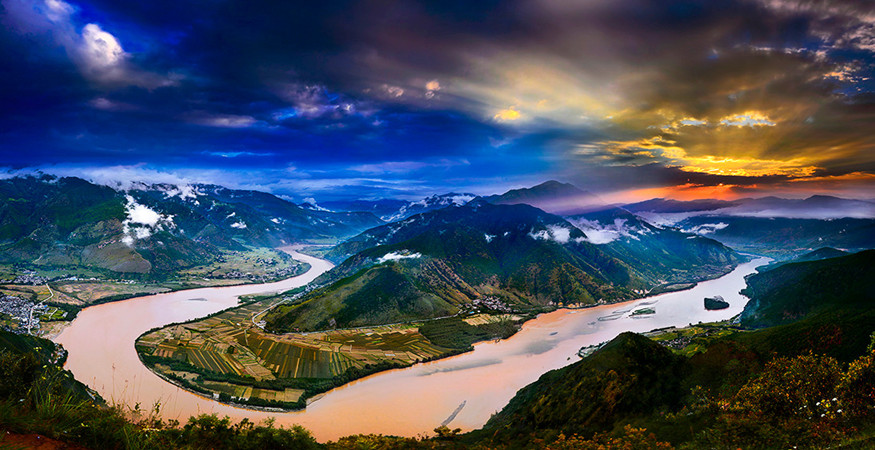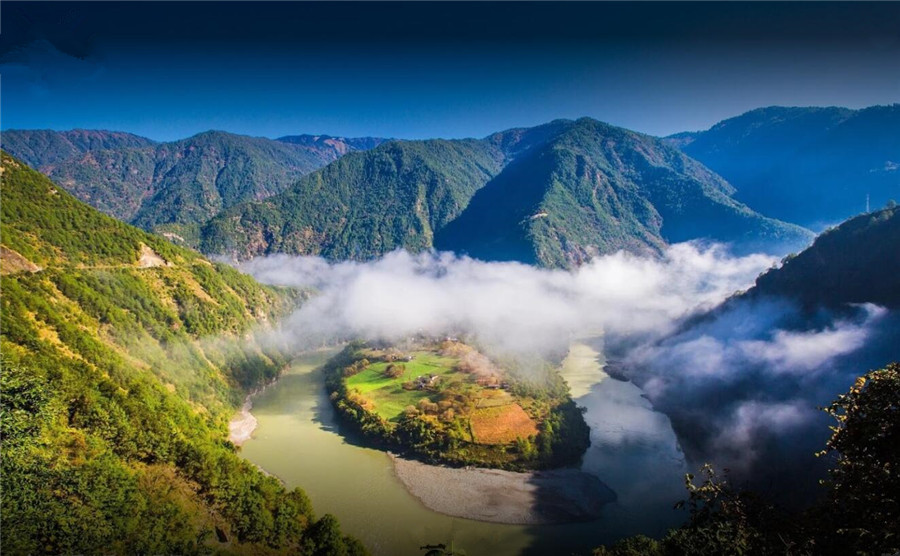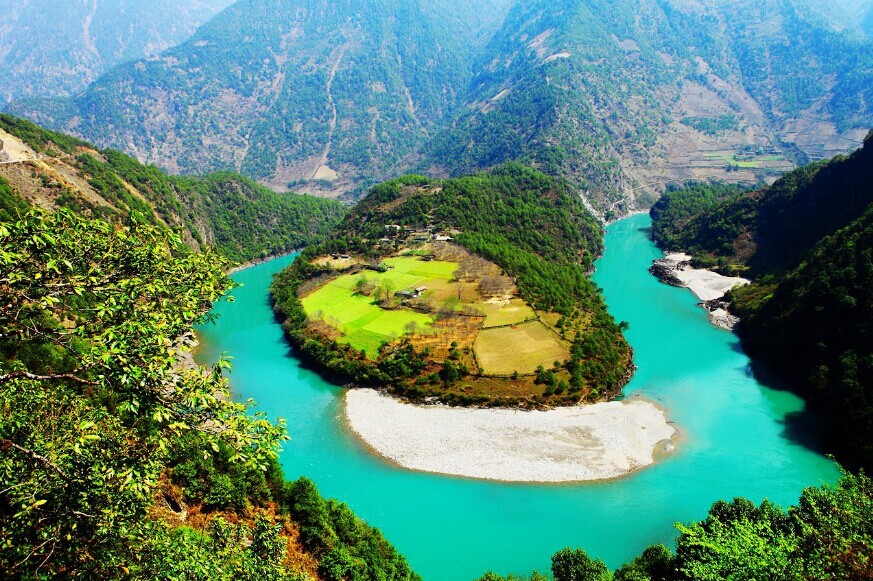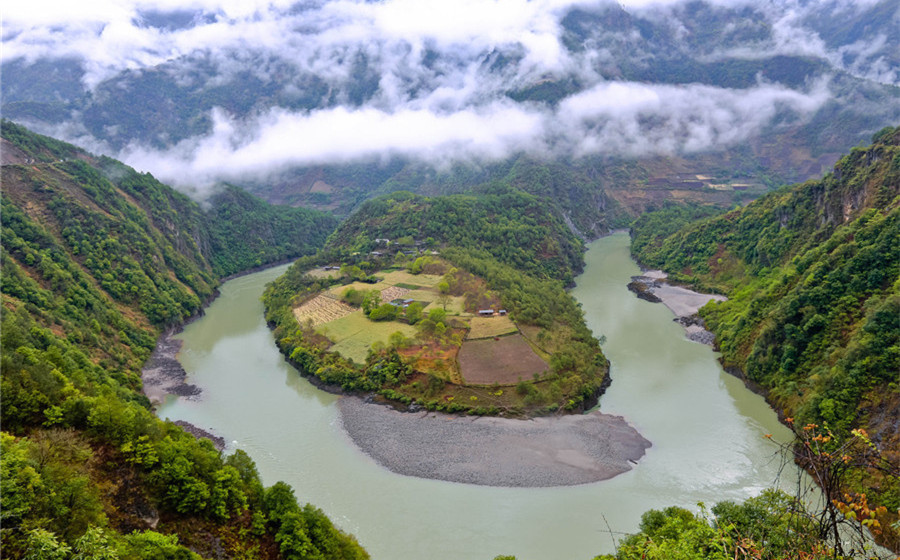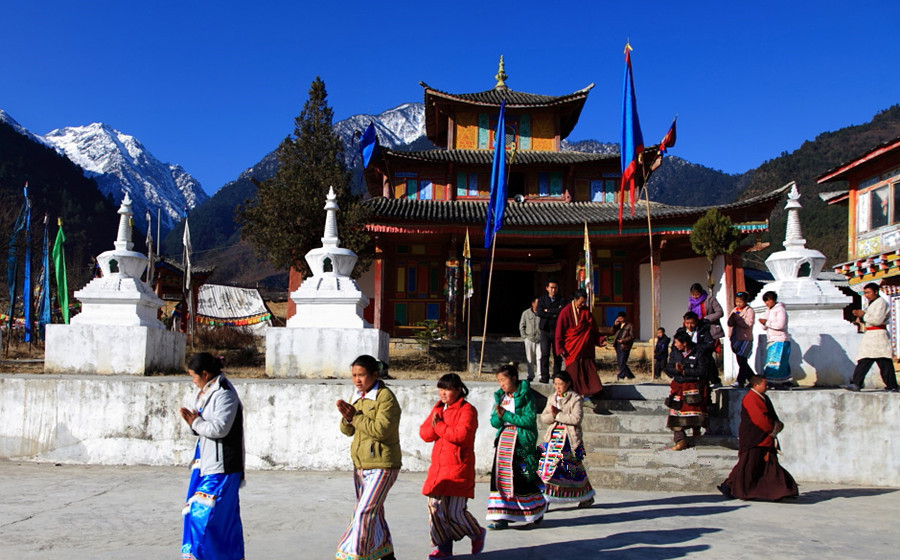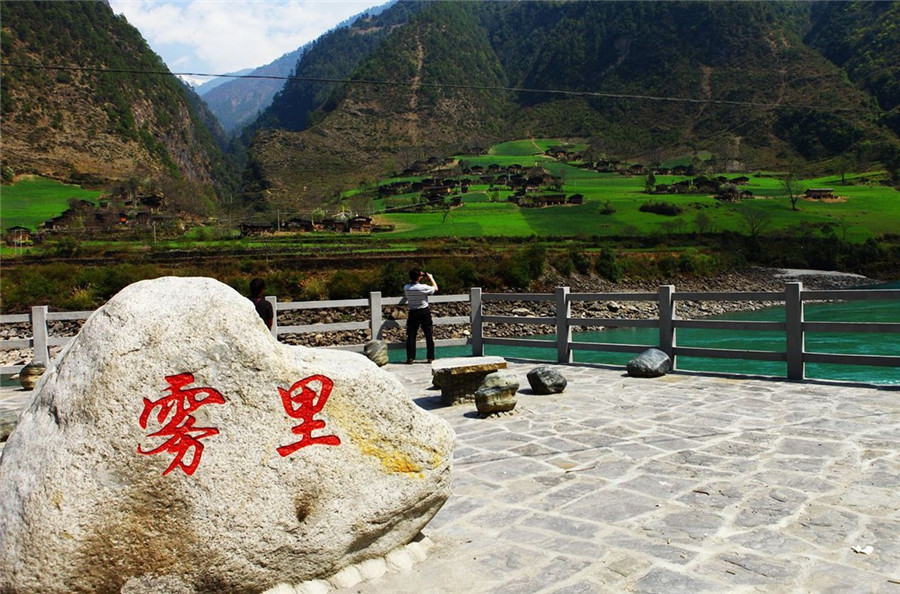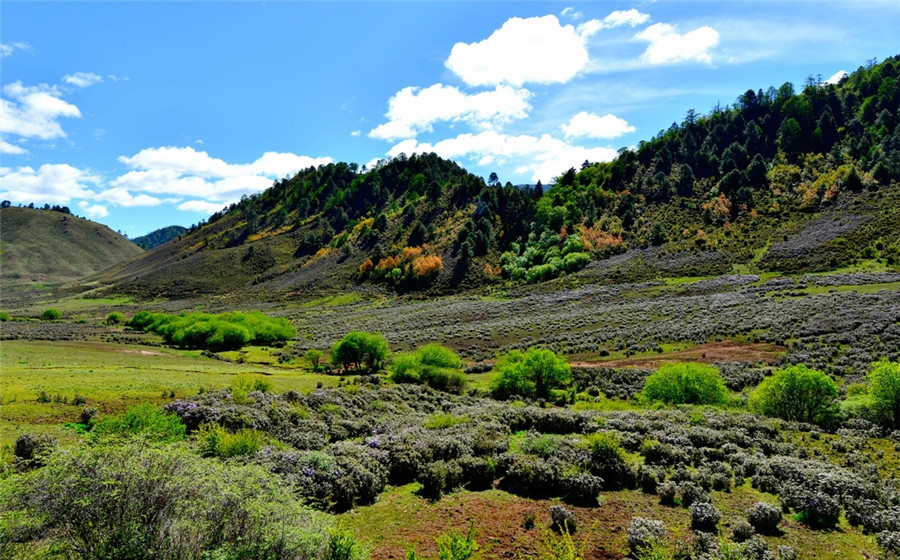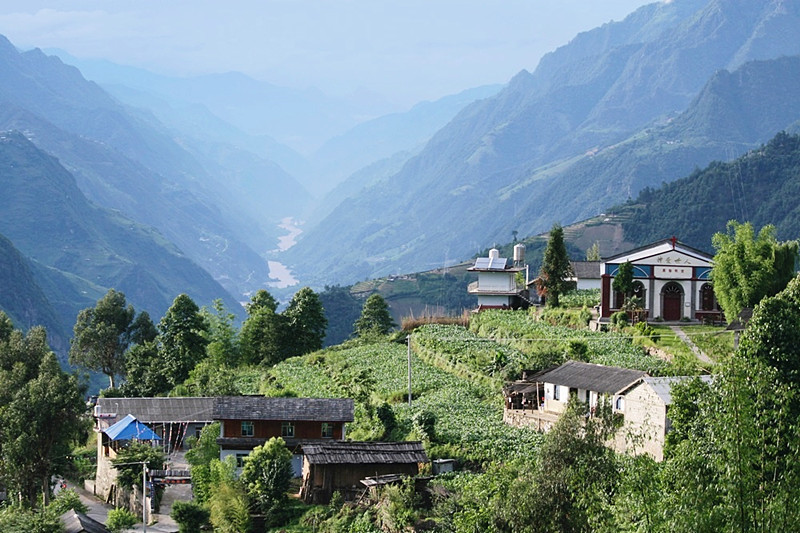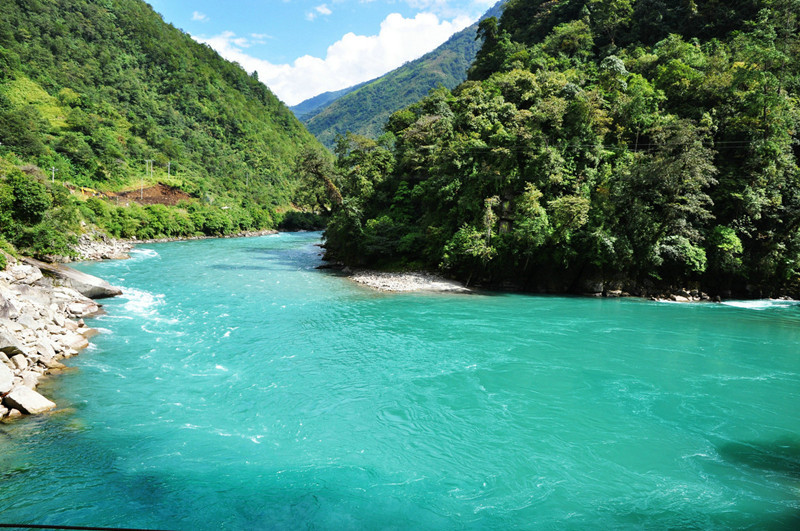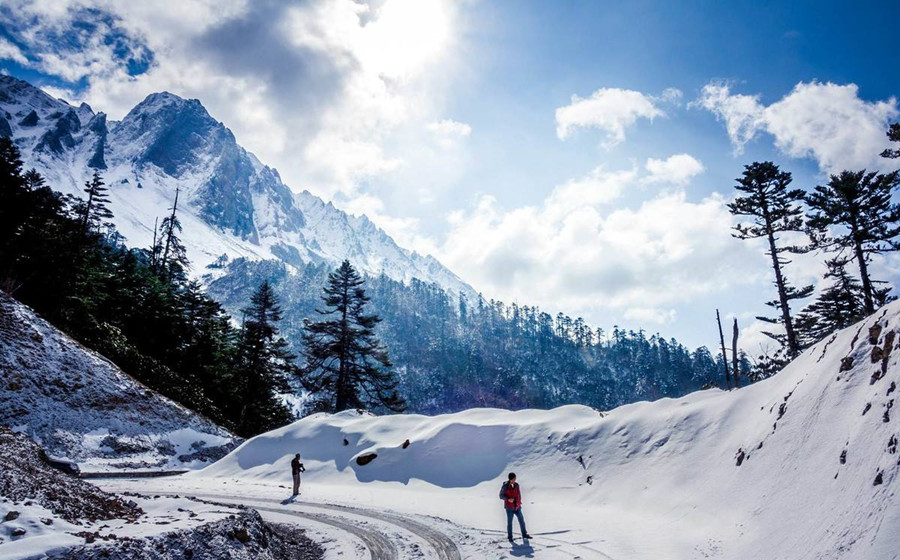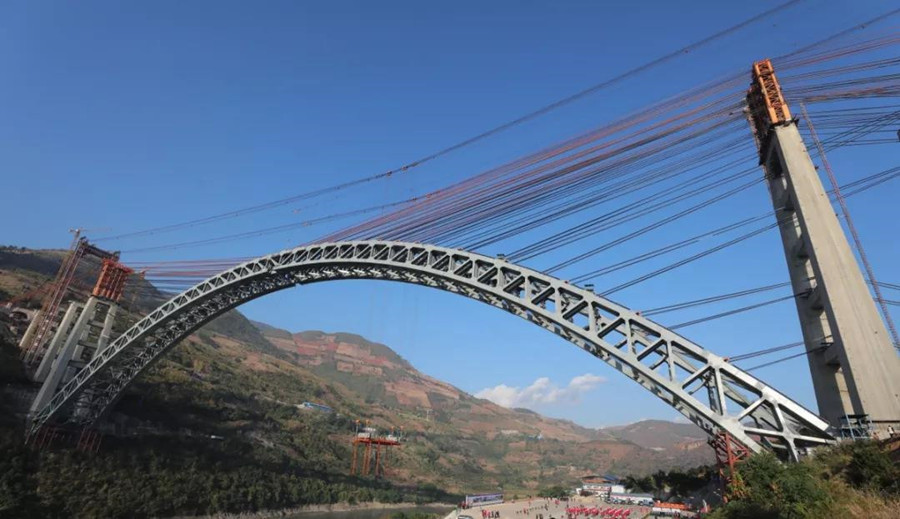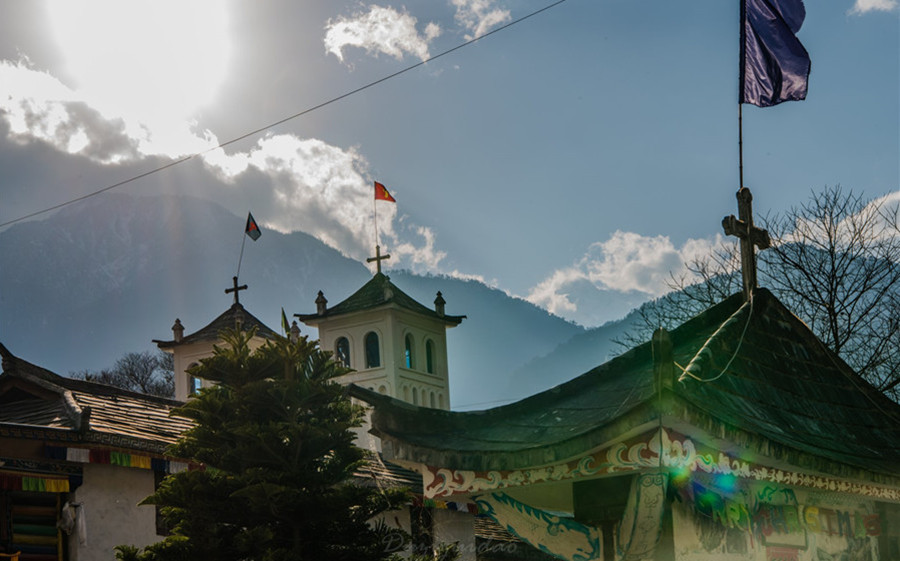
Nujiang Attractions
Deprecated: 函数 get_page_by_title 自版本 6.2.0 起已弃用!请使用 WP_Query 代替。 in /www/wwwroot/yunnanexploration.com/wp-includes/functions.php on line 6078
Nujiang Attractions offer you much to see or to do in Nujiang. Travelers, especially visitors who are inclined to adventure trip always regard Three Parallel Rivers as the top option. Minorities in Nujiang is the most diverse in China and the population of the minorities is the largest one in China. You definitely shouldn’t miss the festivals of minorities in Nujiang, it’s a good chance for travelers to explore ethnic culture. Yunnan Exploration shows you the top attractions, such as Three Parallel Rivers, Nujiang River, Lancang River and Dimaluo Village in Bingzhongluo etc. For more attractions, please check the followings.
Top Attractions in Nujiang
Nujiang attractions feature in the grand and magnificent scenery of the Nujiang River and Grand Canyon, mountainous landscape along the river and the ethnic cultures. Travelers to Nujiang can join in a hiking tour along the Nujiang Grand Canyon to have a site-watch of the master works of the nature, such as the Stone Moon and Pihe Flying Stone. Winter cheery blossoming in Bingzhongluo Scenic Area is also a great temptation to tourists, especially to the photographers. Check more by the following links.
- The First Bend of Nujiang River
- Nujiang Grand Canyon
- Bingzhongluo Scenic Area
- Stone Moon
- Three Parallel Rivers Natural Reserve
- Lamadeng Valley of Nujiang River
Temples in Nujiang
The famous Buddhist Temple in Nujiang is Jinji Temple in Lanping County. It got its name because of its precipitous location (in Chinese, jinji means Golden Cock, which means precipitous location). Puhua Temple in BIngzhongluo is a Lama temple in Nujiang.
More about Temples in Nujiang
Churches in Nujiang
There are hundreds of churches in Nujiang, almost every village has its own church, either Christian or Catholic. The most famous one is the Zhongding Catholic Church in Bingzhongluo. Christianity spread along the Nujiang River in 1913 and in Lanping in 1929. The Christian ethnic groups in the territory mainly include Lisu, Dulong, Nu and Jingpo (Chashan people), with Lisu accounting for the highest proportion.
Mountains in Nujiang
Nujiang boasts plenty of mountains, huge and small. The famous ones are Gongdang Holy Mountain and Laowo Mountain Peak. Moreover, there are two snow mountains in Nujiang: Gawa Gapu Snow Mountain, which is also the main peak of Gaoligong Mountains, and Biluo Snow Mountain, also one of the major mountain ranges in Hengduan Mountain in Yunnan. Mountains in Nujiang are also good choices for hiking tours and birding tours, we have selected tour packages for Nujiang Hiking Tours and Nujiang Birding Tours.
- Biluo Snow Mountain
- Dandang Lika Mountain
- Gawa Gapu Snow Mountain
- Gongdang Holy Mountain
- Laowo Mountain Peak
More about Mountains in Nujiang
Valleys in Nujiang
Along the flowing route of Nuajing River, formed many valleys and canyons which also contribute to Nujiang attractions. Hiking or cycling tours to the valleys and canyons are becoming more and more popular among tourists. Nujiang Grand Canyon, Dulong River Canyon and the First Bend of Nujiang River are the best sites you shouldn't miss.
- Dulong River Canyon
- Dimaluo Valley
- Yeniugu Valley
- Luoguqing Valley Scenic Area
- Nujiang Grand Canyon
- Lamadeng Valley of Nujiang River
Ethnic Towns in Nujiang
Ethnic towns are places where the ethnic groups taking up the majority of the population. The ethnic towns usually have the well-preserved ethnic traditions, so they can be best choice for your Culture Tours in Nujiang.
More about Ethnic Towns in Nujiang
Traditional Ethnic Villages in Nujiang
If you are fan of ethnic culture in China, the traditional ethnic villages are places you shouldn't miss. Traveling to the traditional ethnic villages, you can explore the most authentic ethnic traditions which can't be seen anywhere else. Qiunatong Village, Wuli Village and Zhiziluo Village should be listed on the top of your ethnic culture tour plan.
- Wuli Village
- Qiunatong Village
- Dimaluo Village
- Laomudeng Village
- Kantong Village
- Zhiziluo Village
- Zhongding Village
- Chihengdi Lisu Ethnic Village
More about Traditional Ethnic Villages in Nujiang
Historical, Cultural and Monumental Sites in Nujiang
- Yushuiping Neolithic Cultural Site
- The Chieftain Government Office of TuE Town
- Ancient Salt Road of Lajing Town
- Former Residence of Yang Yuke
- Tongdian Memorial Site of Rebellion Victory
- Hump Route Memorial Hall
- Pianma Anti-British Monument and Museum
- Ancient Tea Horse Road to Tibet in Bingzhongluo
Parks & Nature Reserves in Nujiang
Ethnic Culture Protection Areas in Nujiang
For better protection and passing down of the ethnic culture, four ethnic culture protecion areas were founded in Nujiang.
- Gudang Village Lisu Ethnic Culture Protection Area
- Qinghua Village Pumi Ethnic Culture Protection Area
- Dulongjiang Town Dulong Ethnic Culture Protection Area
- Bingzhongluo Town Nu Ethnic Culture Protection Area
Lakes and Ponds in Nujiang
The aboudant water resources in Nujiang also created quiet lake scenery contrary to roaring flow of the Nujiang River. Tingming Lake located on Gaoligong Mountain is a glacial lake well known for its picturesque scenery and unique phenomenon that people must speak softly here, if they shout, showers, winds, and even hail could burst from the sky. The fact lies in the thick fog hovers over the lake, and it could form into rain and hail while jarred by sound waves. Alpine Lakes in Biluo Snow Mountain is also worth visiting for its distinctive alpine lake features.
More about Lakes and Ponds in Nujiang
Rivers in Nujiang
River scenery in Nujiang is definitely the main lanscape for Nujiang travel. Dulong River is one of the six major river systems in Yunnan. Dulong River is considered as ‘the Natural Museum of Wild Plants’ and is the part of the most intact sustainable landscape. Because of the unique geographic position of Dulong River, few travelers come while the beautiful scenery and special humanistic culture bring much charm.
More about Rivers in Nujiang
Waterfalls in Nujiang
The two major waterfalls in Nujiang are Dishuiyan Waterfall and Moon Waterfall. Dishuiyan waterfall is a natural wonder full of magic colors. The local Dulong people called it “Habayicheng(哈巴依称),” meaning water that falls from the moon. The wonder of Dishuiyan waterfall is that it never changes its appearance no matter in spring, summer, autumn or winter. All the year round, the water is soaring, the mountain is thundering, and the river valley is echoing. The Moon waterfall is on China’s side of the China-Myanmar border in the lower reaches of the Dulong river, about 3 kilometers away from the border. Also known as Hapang waterfall(哈旁瀑布).
Bridges in Nujiang
Suspension and Rope Bridges are typical and primitive transportation facilities in the Nujiang area which is still in common use today. In the past, it is a major transportation tool for the ethnic minorities living in Nujiang Grand Canyon which shows their courage and tenacity. Today there are more and more bridges across the Nu river, but the Liusuo is still there and some have become tools for local people to exercise and play.
Transportation Sites in Nujiang
Stone Gate Pass or Shimen pass is the only passageway between the northern Nujiang river and the ancient tea horse road in Tibet, Biluo snow mountain on the left and Gaoligong mountain on the right. Nujiang gushes out of the Shimen pass and flows down, magnificent and spectacular.
Other Attractions in Nujiang
- Wala Yaku Scenic Area
- Pihe Flying Stone
- Yaping Scenic Area of Gaoli Gongshan Mountain
- Lamaku Alpine Pasture
- Ancient Tea Horse Road to Tibet
- Denggeng Bathhouse
- Bijiang Octagonal Pavillion
- Dayangchang Pasture Scenic Area
Read More:
Regional Attractions
- Lushui City Attractions
- Gongshan County Attractions
- Bingzhongluo Attractions
- Fugong County Attractions
- Lanping County Attractions
- Dulongjiang Attractions
Keep Reading

 7 Days GolfingTour
7 Days GolfingTour
 8 Days Group Tour
8 Days Group Tour
 8 Days Yunnan Tour
8 Days Yunnan Tour
 7 Days Shangri La Hiking
7 Days Shangri La Hiking
 11 Days Yunnan Tour
11 Days Yunnan Tour
 6 Days Yuanyang Terraces
6 Days Yuanyang Terraces
 11 Days Yunnan Tour
11 Days Yunnan Tour
 8 Days South Yunnan
8 Days South Yunnan
 7 Days Tea Tour
7 Days Tea Tour
 8 Days Muslim Tour
8 Days Muslim Tour
 12 Days Self-Driving
12 Days Self-Driving
 4 Days Haba Climbing
4 Days Haba Climbing
 Tiger Leaping Gorge
Tiger Leaping Gorge
 Stone Forest
Stone Forest
 Yunnan-Tibet
Yunnan-Tibet
 Hani Rice Terraces
Hani Rice Terraces
 Kunming
Kunming
 Lijiang
Lijiang
 Shangri-la
Shangri-la
 Dali
Dali
 XishuangBanna
XishuangBanna
 Honghe
Honghe
 Kunming
Kunming
 Lijiang
Lijiang
 Shangri-la
Shangri-la
 Yuanyang Rice Terraces
Yuanyang Rice Terraces
 Nujiang
Nujiang
 XishuangBanna
XishuangBanna
 Spring City Golf
Spring City Golf
 Snow Mountain Golf
Snow Mountain Golf
 Stone Mountain Golf
Stone Mountain Golf

